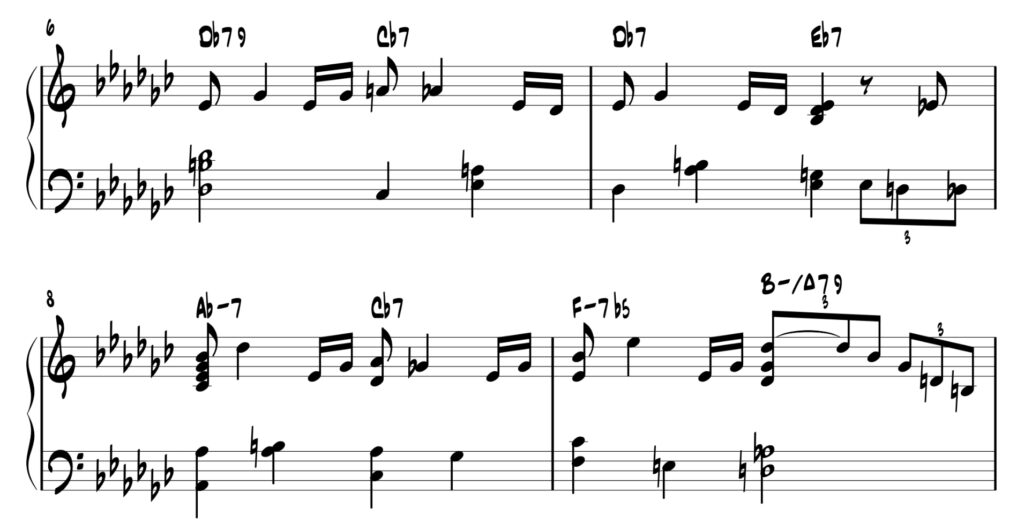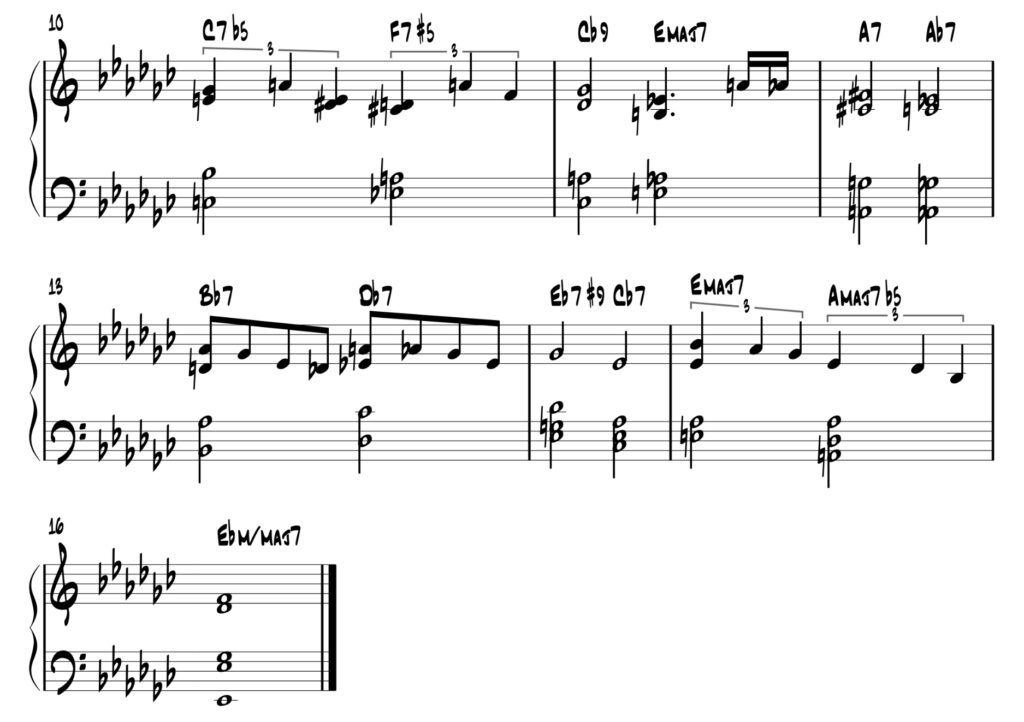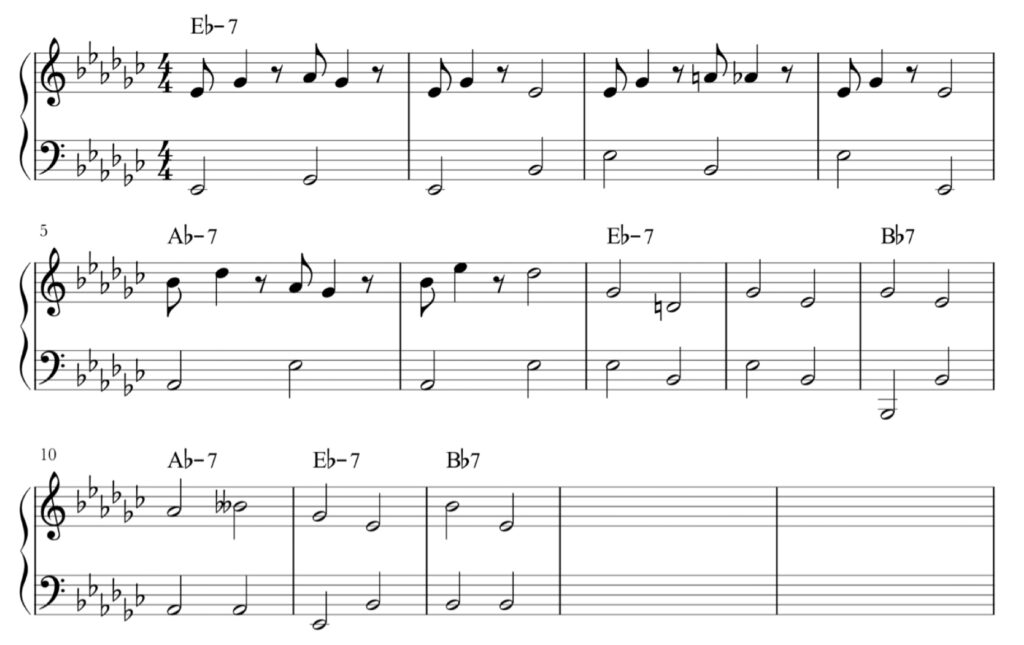Charles Mingus - 1959
There is a lot of conflicting information (and misinformation) out there about the song ‘Goodbye Porkpie Hat’. I will throw my (porkpie) hat into the ring here: To begin, Horace Parlan played piano on ‘Mingus Ah Um’ in 1959. In 1978 he recorded a trio version of Porkpie Hat. If anyone should know how the harmony works in this piece it is Parlan. There are links below to both the Mingus and Parlan recordings. We should also mention the Joni Mitchell version of the song with the great Jaco Pastorius on bass and the John McLaughlin version on ‘My Goals Beyond’.



It is pretty clear to me that the melody of ‘Goodbye Porkpie Hat’ is a 12 bar blues in Eb minor. Example 1 shows the chords built on that scale. I have included both the natural and harmonic minor 7 because Mingus uses both. See Nica’s Dream’ for more on this scale (Link).

More than most songs, the melody is key to understanding how this song works. Example 2 shows a skeletal version of the melody with basic blues changes. There are just two accidentals – d natural which is the harmonic 7 and b double flat or b5.

Most jazz songs have a foundational bass line with elaboration above; it’s helpful to think of ‘Pork Pie Hat’ as the opposite – a foundational melody with colour and dissonance coming from the bass. Example 3 shows the Mingus bass line with the skeletal melody. I have hand written the basic blues changes on top for reference and marked some of the chord degrees implied by the melody/bass shell.

It is very easy to tie yourself in knots trying to do theoretical analysis on this composition. Luckily, because soloists play over a standard minor blues (below) we don’t have to try and fit the song into a harmonic contrivance. There are, however, a few interesting observations that might help prepare the piece for play.
(1) This is first and foremost a blues. The very first chord has a major third in it but the minor third sounds a half a beat later. Freely mixing major and minor thirds is, of course a signature sound of the blues.
(2) “Sister Chords” (Link) play a big role. The second chord of the first bar in Example 3 is a sister chord to the tonic (I and VI). In bar 6 there is a sister chord to the IV chord (Abm). These chords add colour but do indicate harmonic movement.
(3) ”Sister Cadences”. Modified VII and II chords can function as V chords. We talk about “Tritone Substitutions” and “Backdoor Cadences” in the section called “Dominant Substitutions” (Link) but what it comes down to is that a tension-resolution progression can be accomplished from V to I but also by approaching a chord stepwise from above or below. Check out the VII – VI resolution in bar 3, Example 3.
(4) Gospel influence. Notice the implied “Amen cadences” (plagal cadences) entering bar 5 and at the turn around in bar 12.
(5) Refering back to how the melody is foundational, check out how much tension Mingus inject with his bass line- tritones, major sevens and aug 5ths to close!
Mingus did not expect his band members to solo on the head changes. Example 4 has a set of changes similar to what they used on ‘Ah Um’. Notice how the Ebm/maj7 is used throughout, reinforcing the idea that the piece is in the key of Ebm.

